- Home
- Carl Sagan
Comet Page 24
Comet Read online
Page 24
When the most abundant kind of stratospheric dust particle is examined under extremely high magnification (see below), it shows itself to be an irregular aggregate of still tinier particles, individually about a tenth of a micron across: a hundred thousand of them side by side would be as long as the nail of your little finger. There is no known industrial or biological process that makes particles like this. Even if there were, there is no way for such particles to be transported to the stratosphere in such numbers. A range of physical and chemical tests—cosmic ray tracks, say, or nickel/iron ratios—all point in the same direction: these particles have originated on another world. Since the principal source of fine particles in our region of space is the comets, it seems likely that we have before us the stuff of comets.
Probable cometary debris collected at stratospheric altitudes and examined under a scanning electron microscope. Many fine particles are stuck together in a morphology resembling a cluster of grapes. The magnification is 5400 times and the small horizontal line is one micron (a ten-thousandth of a centimeter) across. Courtesy Don Brownlee and Maya Wheelock, University of Washington, and National Aeronautics and Space Administration.
We are not sure why the particles stick together. Perhaps there was once (or still is) an adhesive material on their surfaces. You can see at a glance that this is a fragile structure. It will collapse if you put much weight on it. If these aggregates were ever at depth inside some small world, they would have been crushed—unless the spaces had been filled by some other, more volatile, material, now gone. This is another reason why the stratospheric dust particles plausibly arise from the tails of comets. The ice has now all evaporated, and even some of the organics have probably been lost.
Look at these tiny grains again. They were, probably, once on the surface of a cometary nucleus. If you were able to view close up an undisturbed piece from the interior of a cometary nucleus, you would probably see such clusters of small, dark particles, but with all the voids and surrounds filled with ice. As time passes in the inner solar system, the ice evaporates, the particles are dragged off into space, and some of them by merest accident eventually enter the Earth’s atmosphere.
Ninety percent of the fluffy particles of probable cometary origin collected in this way are aggregates, as we see in the illustration on this page, of tiny submicroscopic dark grains, an intimate mix of silicates and other minerals with complex organics. These individual grains are, very roughly, the same size as the dust that fills the spaces between the stars. It seems just barely possible that we have before us a sample of the original material from which the solar system formed. There is not yet enough of it available to be certain. Much larger scale collection programs by the U-2 and its successors are needed—both to accumulate enough material to do a variety of physical and chemical tests, and to search for rarer particles that may have something surprising to tell us. Ultimately, we will want to compare these particles with particles actually collected from the nucleus or coma of a comet. Such spacecraft missions are now being planned. But for now, it seems at least possible that we are looking for the first time at the bricks and mortar that built the planets.
*This would also be true for hypothetical interstellar comets attracted by the Sun’s gravity; they would most often seem to be arriving from the direction in space toward which the Sun is moving, in the constellation Hercules. The fact that comets do not show a preference for Hercules is one of several powerful arguments against Laplace’s proposal that the long-period comets come to us directly from beyond the solar system.
†Ball reasoned something like this: Suppose the peak intensity of a meteor shower lasts about an hour. If we knew how fast the Earth is moving through the swarm, we could then calculate the distance from the front of the swarm to the back. The Earth is 150 million kilometers from the Sun (93 million miles) and so its entire circular orbit is 2∏ × 1.5 × 108 kilometers around. It takes 365 days for the Earth to make this circuit. So the Earth travels at about 2∏ × 1.5 × 108 kilometers/365 days = 2.5 million kilometers per day. This is the speed of the Earth around the Sun. Thus, if the meteor shower lasts a day, the swarm must be 2.5 million kilometers across. Since generally the peak intensity lasts only a few hours, the inner core of a typical meteor swarm is a few hundred thousand kilometers across.
CHAPTER 14
Scattered Fires and Shattered Worlds
Often, when the Sun has set, scattered fires are seen not far from it.
—SENECA, NATURAL QUESTIONS, BOOK 7, “COMETS”
The angels all were singing out of tune,
And hoarse with having little else to do,
Excepting to wind up the sun and moon,
Or curb a runaway young star or two,
Or wild colt of a comet, which too soon
Broke out of bounds o’er the ethereal blue,
Splitting some planet with its beautiful tail,
As boats are sometimes by a wanton whale.
—LORD BYRON, THE VISION OF JUDGMENT, 1822
Ice and iron cannot be welded.
—ROBERT LOUIS STEVENSON, WEIR OF HEMISTON, 1896
George-Louis Leclerc, Comte de Buffon, a naturalist who died on the eve of the French Revolution, was one of the first scientists to attempt, from the record in the rocks, to reconstruct the history of the Earth as a succession of geological epochs. He also proposed that in ages past a massive body that he called a comet struck the Sun, launching out into space great blobs of fiery matter which cooled, condensed, and formed the planets and their moons. Laplace soon showed that this reconstruction of events could not account for the orbital regularities in the solar system; but it is the first mention in science of cometary matter hitting the Sun, and the first modern attempt to describe how at least some comets die. In this chapter, we describe four of the many fates of comets: to hit the Sun directly; to disintegrate, with the remains spiraling into the Sun; to impact the moons and planets; and to be transformed into another world. (There is also a fifth: to be ejected out of the solar system altogether, and wander forlornly in interstellar space.)
In the nineteenth century—when no one knew that there was such a thing as the nucleus of an atom, much less a science of nuclear physics—it was widely held that meteors make the Sun shine. Meteors must be falling into the Sun, it was argued, surrendering their energy of motion, and thereby heating further the fiery surface—which, in consequence, obligingly radiated light and heat to the needy inhabitants of the Earth. But meteors are the debris and sometimes the shrouds of dead and dying comets; so if this view were correct, comets would be responsible for life on Earth. In fact, meteors provide pitifully little of the Sun’s light, and it is hydrogen fusion that makes the Sun shine, although comets and their debris regularly strike the Sun, the Moon, and the planets—and may in several senses be responsible for life on Earth.
The Great September Comet (1882 II) came fairly near to hitting the Sun; it is called—one of the more romantic names in cometary science—a sungrazer. Before perihelion passage, it showed a single nucleus. Afterward, as it headed out past the planets, it revealed itself to have split into four separate nuclei, which gradually drew away from one another. The Sun tugs on the near side of the comet a little more strongly than on the far side; also, the sunward side feels more heat than the night side. With a very fragile structure and a close passage these unequal stresses might be enough to break it into two or more pieces. The computed periods for the return of these components are all between five hundred and nine hundred years in the future, but separated by intervals of about a century. The four fragments—each of considerable size—have been predicted (with considerable uncertainty) to return in the years 2546, 2651, 2757, and 2841. The generations of observers in those remote times will see four comets, spaced about a century apart, pouring out of the same small region of the sky, heading for the Sun.
The Comet of 1882 is itself one of the so-called Kreutz family of sungrazing comets that episodically arrive from the same pl
ace in the sky. The great sungrazing comets of 1668, 1843, 1880, and 1887 (the last-named, like the ghostly horseman seen by Ichabod Crane, apparently headless) are all part of this family, as are such more recent visitors as 1963 V and 1970 VI. It is natural to wonder whether they might all be fragments of a still larger ancestral comet that, in another age, came too close to the Sun and was torn apart by the solar tides.
The closer a comet passes to the Sun, the stronger is this disruptive tidal force. Comet Ikeya-Seki (1965 VIII) was also a daylight sungrazer of the Kreutz family and split into two pieces just after perihelion. The Great Comet of December 1680, studied by Newton and Halley, passed less than 100,000 kilometers from the Sun’s surface, considerably closer than the Moon is to the Earth;* it did not split during perihelion passage. On the other hand, Comet West (1976 VI), coming no closer than thirty million kilometers to the Sun, split into four fragments that slowly receded from each other at more than their mutual escape velocity. Thus the gravitational tides of the Sun or unequal heating may not be the sole causes of the splitting of comets. We still are not in all cases sure why comets split, although some may be much more cohesively bound together than others.
Splitting and jetting may be connected. At the moment Comet West split, the individual fragments brightened noticeably, and propelled large quantities of dust into space in the first of some dozen bursts. Eighty percent of comets that split do so when they are far from the Sun. Comet Wirtanen fragmented in 1957 a little inside the orbit of Saturn. Comet Biela/Gambart is a similar case. Such splitting may be due to the vaporization of exotic ices, or to collisions with otherwise undetected interplanetary boulders. These sungrazers have all passed within about half a million kilometers of the Sun’s surface, penetrating through the thin, hot gas of the solar corona where the temperature hovers around a million degrees. But the comet spends so little time in the solar corona, and the tremendously hot gas there is so thin, that it is probably the Sun’s gravity more than its heat that is responsible for the fragmentation of the sungrazers.
!
Scientific papers tend to be low key, and the appearance of an exclamation point—except in mathematical papers, where it stands for something very different—is rare. Here is one of the exceptions. Brian Marsden of the Center for Astrophysics in Cambridge, Massachusetts, is the director of the International Astronomical Union’s office that alerts astronomers all over the world to the discovery of a new comet, and much else. Marsden himself has made a number of important contributions to understanding the comets. In a scientific paper* published in the 1960s, he is discussing the sungrazing comets, and finds that there are two members, 1882 II and 1965 VIII, that look as if they had split apart near aphelion. But aphelion is well beyond the orbit of Neptune, disconcertingly far away:
Although most of the comets observed to split have done so for no obvious reason, one really does require an explanation when the velocity of separation is some 20% of the velocity of the comet itself! A collision with some asteroidal object at 200 A.U. from the sun, and 100 A.U. above the ecliptic plane, even though it would only have to happen once, is scarcely worthy of serious consideration.
A violent explosion 200 Astronomical Units from the Sun, virtually in the interstellar night, is hard to understand. Collisions there should be extremely rare. The problem is left unsolved.
If some comets come so close to hitting the Sun, should not others fall in and impact it head on? Occasionally comets approach the Sun, are lost in its glare, and are never seen again; but perhaps they have only been tidally disrupted into many small pieces by the Sun’s gravity. However, through an entirely chance discovery, we can now be reasonably sure that comets do sometimes hit the Sun, as Buffon, on a larger scale, had long ago proposed.
The U.S. Naval Research Laboratory flies a video camera and telescope piggyback on an Air Force satellite, to monitor the changing activity of the solar corona. Perhaps it is an alarm system for solar flares and other storms of charged particles from the Sun which may damage instruments and astronauts in space (see Chapter 9). A small opaque disk is positioned in front of the telescope so it blocks out the Sun; the fainter, extremely hot solar corona can now be photographed. In late August 1979 this instrument made an extraordinary discovery, which, however, remained unreported for two and a half years, “owing to delays in release of the data tapes to experimenters.” It obtained, by accident, a time lapse motion picture of a comet on an impact trajectory with the Sun. The comet, called Howard-Koomin-Michels (1979 XI), turns out also to be a probable member of the Kreutz family of sungrazing comets. The comet was headed around the Sun, but its perihelion distance was too near. The head never emerged on the other side of the Sun, and must have vaporized and fragmented into its constituent small grains. But the tail of this now decapitated comet continued intact for at least a day, before being dissipated and blown back from the Sun. Imagine the comet streaking through the solar corona, outgassing madly, tumbling erratically, fragmenting, grains vaporizing in a staccato of small flashes, until, its substance spent, all that remains in the vicinity of the Sun is a cloud of atoms—mostly H and O—stirred in the white-hot hurricane that constitutes its outer, cooler layers.
We do not know how many other sungrazers have suffered a similar fate. Comet Howard-Koomin-Michels had not previously been known to exist. It seems unlikely that more than one comet hits the Sun each year; but even this would correspond to about ten times more mass falling into the Sun every year from intact comets than from interplanetary dust. Over the age of the solar system, this might be enough to make the dying Sun of billions of years from now shine on for one more decade.
And if there are several streams of meteors, which come across that little line in space which constitutes the Earth’s orbit, what untold multitudes of them must be within the whole length and breadth of the solar system! Perhaps it may even turn out that the mysterious zodiacal light which attends the Sun, is due to countless hordes of these little bodies flying in all directions through the space that lies within the Earth’s orbit.
—G. JOHNSTONE STONEY, “THE STORY OF THE NOVEMBER METEORS,”
FRIDAY-EVENING DISCOURSE, THE ROYAL INSTITUTION, FEBRUARY 14, 1879
Find a place, if you can, far from the city, far from atmospheric pollution, far from artificial light. Pick a clear and moonless night, preferably in springtime in early evening. Look near where the Sun has set. Direct sunlight is now blocked by the western horizon, and you can make out a more feeble light. If you live in northern midlatitudes, you’ll see a faint luminous band rising upward and to the left from the place where the Sun has set. It is not the Milky Way, and is only a little harder to. find. Seneca called it “scattered fires,” and that is what it looks like, distant flames in, or somehow reflected off, the sky.
If you observe in very clear air, especially at tropical latitudes, you can detect this band of light sweeping completely around the sky, through the zodiacal constellations among which the planets move; and for this reason, it is called the zodiacal light. At night, just opposite where the Sun is on the other side of the Earth, is a patch of light, brighter than its surroundings, called the Gegenschein, German for counterglow. From the geometry, it is clear that the Earth—along with the other planets—is immersed in a flat ring of material that envelops the Sun and reflects its light back to Earth.
This further example of disk-like structures in astronomy did not escape the notice of Immanuel Kant. While Kant had more than one view on the matter, his description of the nature and origin of the zodiacal cloud is memorable:
The Sun is surrounded with a subtle vapour which surrounds it in the plane of its equator, and is spread out to only a small breadth on both sides but extending to a great distance. We cannot be certain whether … it comes into contact with the surface of the Sun … or, like Saturn’s ring, is everywhere removed to a distance from it. Whichever of these views is correct, there remains resemblance enough to bring this phenomenon into comparison with Saturn
’s ring … This necklace of the Sun … may have been formed out of the universal primitive matter whose particles, when it was floating around in the highest regions of the solar world, only sank to the Sun after the completely finished formation of the whole system.
Kant seems to be saying that the zodiacal light is reflected off a flattened disk of small particles deriving from the solar nebula, and only lately arrived in the inner solar system. If this reading is correct, once again Kant, the scientist, proves to be a century or two ahead of his time.
When you view the zodiacal light, you are observing the remains of comets (and, to a lesser extent, fine debris from the collisions of asteroids between the orbits of Mars and Jupiter). There isn’t much of the stuff. The total mass of all the particles in the zodiacal cloud is only some hundred billion tons, the mass of a single comet a few kilometers across. This cloud is made of fine grains of dark dust, mixes of silicates and organics, typically tens of microns across and apparently very like the particles recovered by aircraft in the stratosphere (Chapter 13). If you grind up a small comet into ten-micron pieces, and ignore the ice, you produce a trillion trillion particles. Spread them through the inner solar system and they can reflect a fair amount of light.
But we should not imagine interplanetary space to be full of small zodiacal particles. Hold your thumb in front of your nose and move it toward the Sun. If you were able to continue traveling, thumb first, all the way into the Sun, how many zodiacal particles would you encounter? The answer seems to be only a few. A single comet, during a single perihelion passage, can provide a hundredth of a percent of all the particles in the zodiacal cloud.
These particles are now measured routinely by interplanetary spacecraft. For example, between 1972 and 1974, the HEOS-2 Earth satellite of the European Space Agency searched for dust between 5,000 and 244,000 kilometers from the Earth, and found itself flying through occasional swarms of fine particles, previously unknown. The swarms must recently have formed from a larger parent body (thought to be Comet Kohoutek), because the lifetime of a coherent cloud of grains is very brief. Possibly a large, extremely fluffy body fragmented near the Earth. But, in the large, the zodiacal cloud is uniform, homo-geneous, without lumps or strands or holes—except when a planet plows through it, and temporarily leaves a kind of tunnel in its wake. Spacecraft on their way to some distant planet regularly bump into the stuff. But there’s so little of it, and the individual particles are so far apart (a kilometer separation is typical) that they do not impede interplanetary flight.

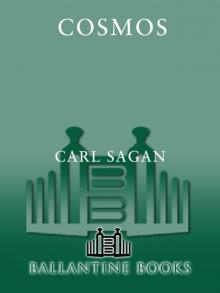 Cosmos
Cosmos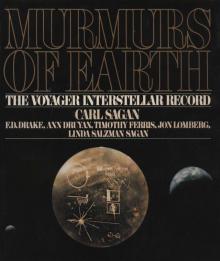 Murmurs of Earth
Murmurs of Earth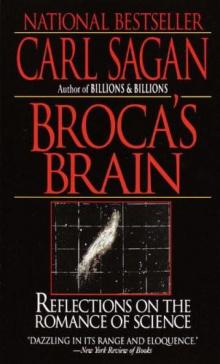 Broca's Brain
Broca's Brain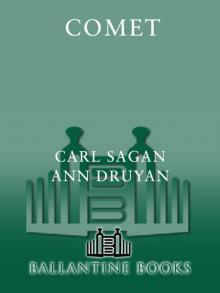 Comet
Comet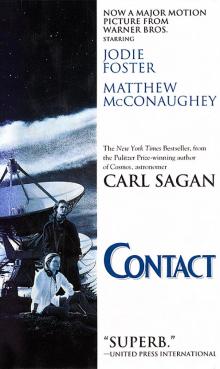 Contact
Contact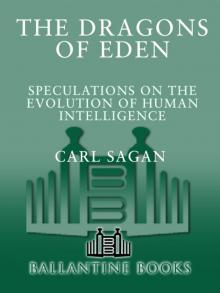 Dragons of Eden
Dragons of Eden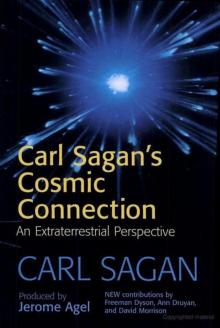 Cosmic Connection
Cosmic Connection Shadows of Forgotten Ancestors
Shadows of Forgotten Ancestors Billions & Billions
Billions & Billions Comet, Revised
Comet, Revised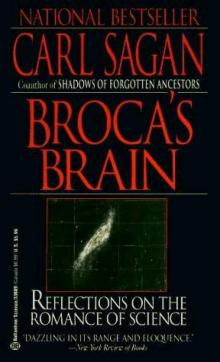 Broca's Brain: The Romance of Science
Broca's Brain: The Romance of Science The Varieties of Scientific Experience: A Personal View of the Search for God
The Varieties of Scientific Experience: A Personal View of the Search for God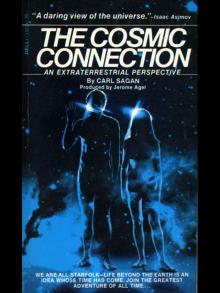 The Cosmic Connection
The Cosmic Connection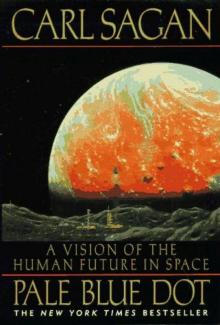 Pale Blue Dot: A Vision of the Human Future in Space
Pale Blue Dot: A Vision of the Human Future in Space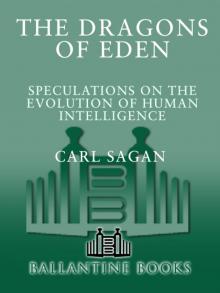 The Dragons of Eden
The Dragons of Eden